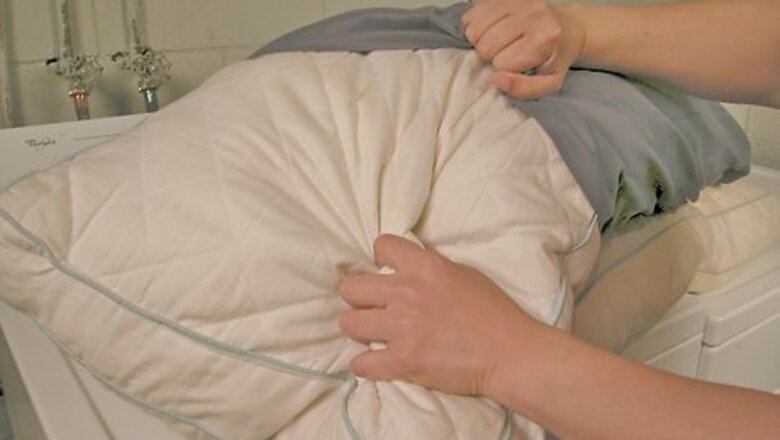
views
Washing the Pillows
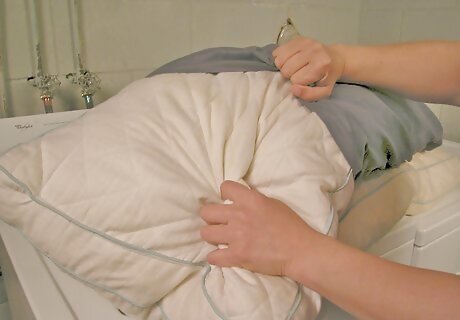
Take the pillow out of the pillowcase. If the pillow is inside a pillow protector (a zippered, padded pillowcase), take it out of that as well.
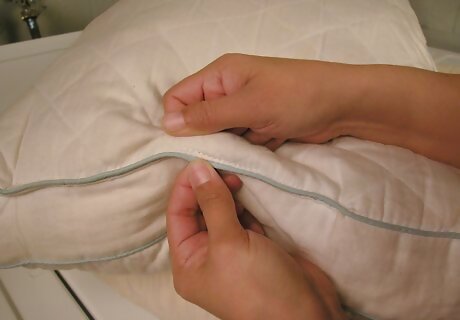
Check the pillow for any rips or holes. Be sure to check along the seams. If there are any rips or tears, you will need to sew them back up.
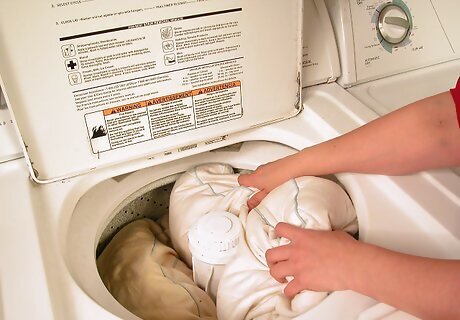
Put two pillows into the washing machine. This will help things balanced inside the washer. If you are unable to fit the pillows in the drum, squeeze them first to get the air out. Try not to use a top-loading washer, as the agitator may damage the pillows. If you do not have a front-loading washer, consider visiting a Laundromat; they should have one available that you can use. If you must use a top-loading washing machine, put the pillows in vertically instead of horizontally. That way, they won't get tangled in the agitator.
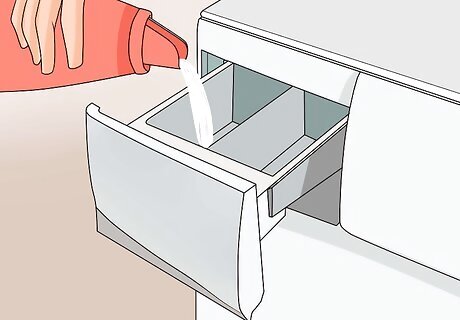
Pour a low-sudsing laundry detergent into the detergent compartment. Use less detergent than you normally would. This will prevent any buildup or residue. Also, try to use liquid detergent instead of powder one. Powder detergent is more likely to cause buildup and residue. This can lead to skin irritations and allergies. Pillows are bulky, so they do not rinse out well. The less soap you use, the less you will have to rinse them.
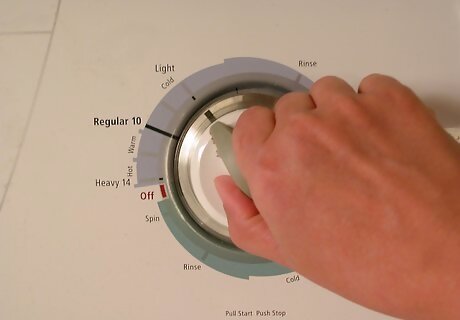
Set your washing machine to the delicate cycle. If you can, try to use hot water. This will help kill any dust mites that might be living inside your pillow. Keep in mind, however, that hot water may also damage the feathers. If you are worried about this, use warm or cool water instead.
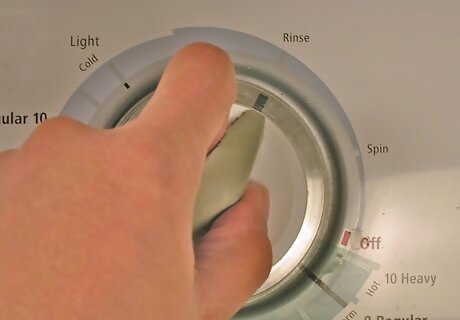
Consider using an extra rinse and spin cycles. This will help get any soap residue out. The extra spin cycle will help get rid of any excess moisture.
Drying the pillows
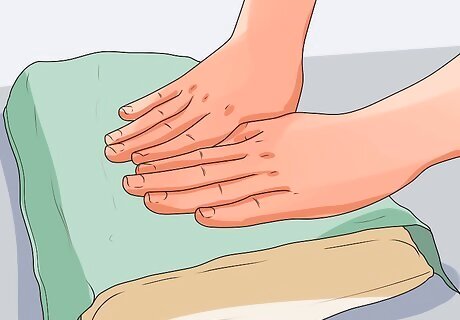
Squish the water out of the pillows using a towel. Place the pillow between two towels, and press down on it. The towels will help soak up any extra water. Repeat this step for the other pillow. Do not wring or twist the pillows.
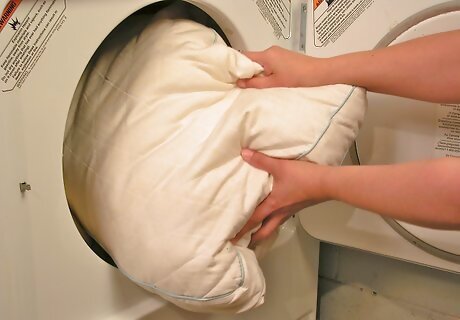
Put the feather pillows into the dryer. Use a delicate cycle, with either a low-heat or no-heat setting. Using low-heat will help the pillows dry faster, but it may damage the feathers inside. Using the no-heat or air-only cycle may take longer (and two to three cycles), but it will be the safest for the feathers. Be sure to fluff the pillow between cycles. Do this by taking it out of the dryer and beating it. This will also help break up any clumps inside the pillow. If you are using a low-heat setting, consider using the air-only setting towards the end of the cycle. This will help keep the pillows from overheating and getting ruined.
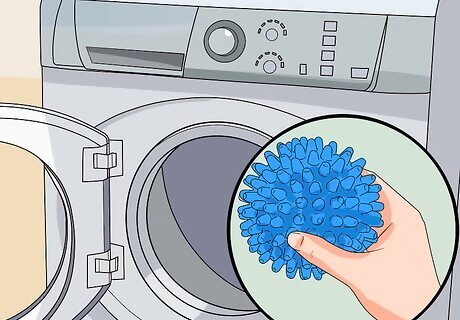
Add some dryer balls into the dryer to keep the pillows fluffy. If you do not have any dryer balls, you can use some clean tennis/canvas shoes instead; be sure to put them inside a clean pillowcase first, however. You can also stuff a tennis balls into a clean sock. This will help keep the pillow fluffy as it is drying. You can also add a thick towel into the dryer. This will help soak up any water that might be left in the pillow.
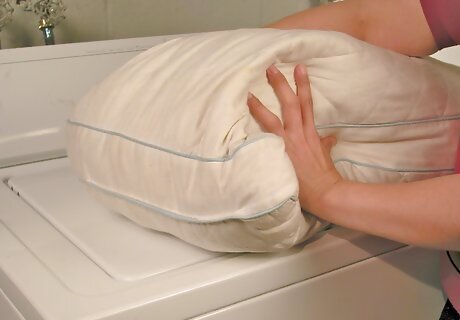
Fluff the pillow once you take it out of the dryer. Even with dryer balls, there may still be some clumps inside the pillow. Hold the pillow by two corners and shake it up and down for a few minutes. Repeat this step for the other side.
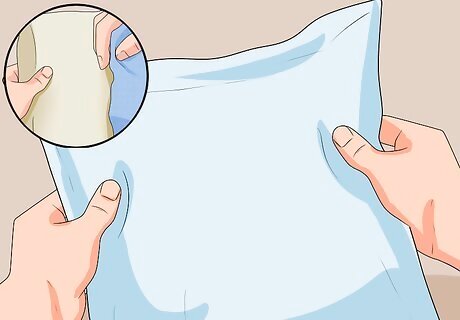
Cover the pillows with clean pillowcases once they are dry. Do not use your pillows if they are still damp. Doing so can lead to rot and mildew.
Treating Yellowing, Odors, and Mildew
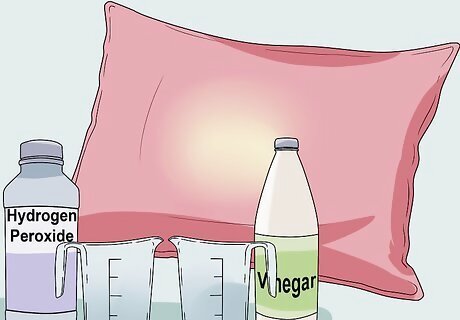
Add 1 cup (240 milliliters) of hydrogen peroxide and ½ cup (120 milliliters) of white vinegar to whiten yellowed pillows. Set the washing machine to a "soak" cycle. Add the hydrogen peroxide and white vinegar directly into the drum. Once the soak cycle has finished, add the detergent.
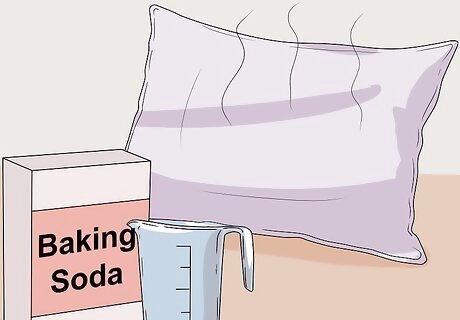
Use ¼ to ½ cup (45 to 90 grams) of baking soda to get rid of smells. Use ¼ cup (45 grams) if you have a front-loading washer, and ½ cup (90 grams) if you have a top-loading one. Add it directly to your detergent. Baking soda may also help get rid of stains.
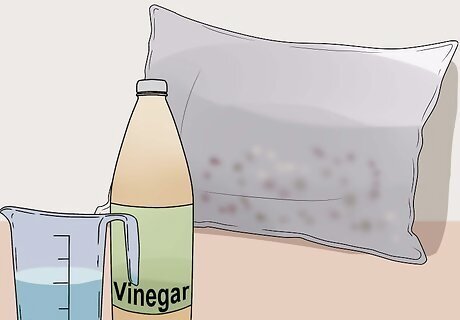
Use ½ to 1 cup (120 to 240 milliliters) of white vinegar to get rid of mold and mildew. Add it into the detergent compartment. White vinegar may also help get rid of smells.
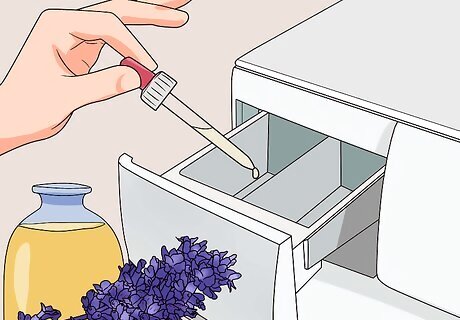
Try adding a few drops of essential oil into the rise cycle. This will give the pillow a nice, subtle scent. Try something soothing, such as lavender, rosemary, or vanilla.
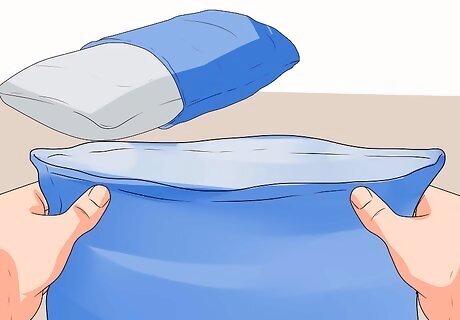
Think about using pillow protectors. These are padded pillowcases that you put over the pillow. You can then put a fabric pillowcase over these. Pillow protectors will help keep the pillow clean longer, and keep it from getting stained.
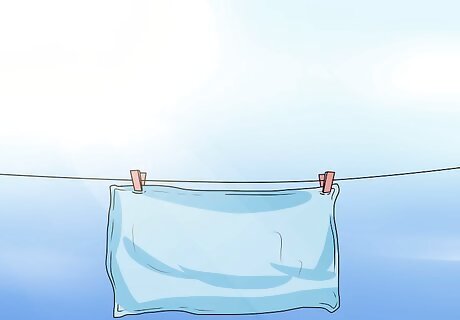
Set musty-smelling pillows out in the sun. If your pillow still smells musty, leave it out in the sun for a few hours. The sunlight, heat, and fresh air will help kill any odor-causing bacteria. It may also make your pillow smell fresher.















Comments
0 comment